Trekking tour - 13 days/ 8 days trekking
About UTTARAKHAND
Uttarakhand is a state blessed with an enormous diversity of cultures and landscapes. Just like Himachal Pradesh, Sikkim, Bhutan and Arunachal Pradesh, it spans the whole altitudinal range from steamy jungle where tigers and wild elephants roam to some of the highest peaks of the Himalayas. One of them is Nanda Devi (7816 m, 25,636 ft), the highest mountain that lies fully in India.
TREKKERS’ PARADISEThe higher reaches of the Uttarakhand Himalayas are a mecca for trekkers. You can follow the herders up to the high bughyals (alpine meadows) and trek up to passes that in the old days gave access to Tibet. They reward you with some of the best glacial vistas in the Himalayas. Although the number of Indian trekkers is increasing, these areas still don’t get that many visitors as the much more known treks of Ladakh and Himachal Pradesh.
Read more…Read less
Wildlife enthusiasts find a treasure trove of biodiversity here, partly protected in national parks and wildlife reserves throughout the state. Most notably, Jim Corbett National Park and Nanda Devi & Valley of Flowers National Park. Jim Corbett National Park is named after A famous British hunter-turned-conservationist. It is well known and popular as it is one of the tiger parks in India that is easiest to reach from Delhi. Apart from being home to a wide array of mammals, birds and plant life, it has very appealing landscapes and a well-laid out infrastructure of jeep trails. Nanda Devi & Valley of Flowers National Parks are two formerly separated but now joined protected areas lying almost completely at or higher than 3500m (11.500 ft). They can be explored only on foot.
HINDU PILGRIMAGETo Hindus – who make up 83% of the state’s population – the higher reaches of Uttarakhand are known as Dev Bhoomi – the abode of the gods. This is not just folklore, as present day Hindu culture finds many of its roots in this area. It is believed that the sage Vyasa scripted the Hindu epic Mahabharata here. In the Middle Ages, the Hindu kingdoms of Garwhal and Kumaon made up the western and eastern part of the present day state, respectively.
Millions flock every year to the many pilgrim sites that the state harbors. Easily accessible places like Rishikesh, Haridwar are not only popular with Hindu pilgrims but also host numerous ashrams and yoga schools that cater mainly to foreign visitors. Much higher up, you can witness die-hard Hindu pilgrims and saddhus dipping themselves in ice-cold waters where Mother Ganga (Ganges) emerges from the mouth of a glacier.
BREATHTAKING VIEWS, COZY RETREATSTraveling by car, you may experience Uttarakhand as a never-ending series of curves and switchbacks, but after each of these bends new views and sights await you. The mountains are covered in forests and green fields and especially in the winter months you get breathtaking views of the snow-clad Himalayas on the border with Tibet (China). Uttarakhand counts numerous so-called hill stations, towns situated at medium elevation levels that have been welcoming tourist since the British era. These hill stations are popular with domestic tourists, but have a lot to offer to ‘foreigners’ as well. In and around them, you can find (with some effort) hidden lodges, boutique hotels and family-run retreats with a high degree of the ‘Hotel California factor’: you can check in any time, but you may never want to leave.
Region
Uttarakhand
(India)
Best Time
May-June &
Sept-Nov
No. Of Days
13 days, 8 days trek
Trip Character
Trekking tour
Sleeping Altitude
290 - 3310 m
Trek Character
Camping trek
Level: 3
Price
INR XXX/ $ XXX
ABOUT THIS TOUR
On this tour, you’ll travel by train and car from Delhi to the Garhwal Himalayas in the state of Uttarakhand. You’ll travel up along the mighty and holy Ganges along some of the most sacred and popular Hindu pilgrims places, such as Haridwar and Rishikesh. Here, you will witness offering rituals on the banks of Mother Ganga.
Following one of the Ganges’ main tributaries, the Alaknanda River, to its upper reaches, you’ll reach Badrinath, one of the four most important Hindu pilgrim places in the high Himalayas (3100m). Here, you’ll join saddhus (ascetics) and devotees on their trek up to the holy lake Hemkund and explore the famous Valley of Flowers. The latter is a national park, not only famous for its botanical diversity but also for its setting amidst a range of very tall glaciated peaks.
After this you’ll make one of the most rewarding treks in the Indian Himalayas in terms of views, the Kuari Pass trek. From Auli, not far from the pilgrims’ town of Joshimath, you’ll trek up over bugyals – verdant alpine meadows where semi-nomadic herders tend to their sheep and goats – and through magnificent forests to the Kuari Pass at 3640m. Enjoying more and different views, you’ll descend on the other side to the remote and picturesque villages of Jangi and Ramni.
After returning to Rishikesh by car, you’ll do an exciting rafting trip on the Ganges, before taking the train back to Delhi.
YOUR custom-made TRIP
The tour described here, as well as the other ones on our website, are mainly meant as suggestions. We would be happy to offer you a travel proposal that fully meets your personal demands and expectations. That means that you choose where you want to go, what level of accommodation and type of transport you want and what activities you prefer.
Please let yourself be inspired by this and other trips on our website and then drop us a line (or call us) to explain your travel wishes. We will be happy to help you put together the perfect trip. You can reach us over e-mail, Messenger, Whatsapp or mobile phone.
EXTENSIONS & VARIATIONS
Apart from the tour as described here, you could consider the following add-ons and changes:
- On all tours In India we can organise one or two days sight-seeing in Delhi, either at the beginning or the end of the tour. You would be taken to Connaught Place, the center of New Delhi, the bustling beehive of Old Delhi, the Red Fort, Qutub Minar (an old minaret), The Akshardam Temple and more if you like.
- For those who want to see more of the Indian plains we can organise a one or two-day trip to Agra (site fo the Taj Mahal) or a three to five-day Golden Circle tour, taking in Delhi, Jaipur and Agra.
- Include another short trek on which you walk up to the source of the Ganges at Gaumukh near Gangotri. This can be done at the beginning or end of this tour. It adds six days in total to the tour.
- If you add another two days to the trek, you can explore the XXX valley further XXX and visit the Pachu Glacier and the beautiful valley in front of it. It also awards you with excellent views of Nanda Devi.
- If trekking is not your cup of tea, we can show you Uttarakhand and some of the beautiful high pilgrim places by car and by doing less strenuous day walks only.
ITINERARY
-
Day 01: Delhi - Kathgodam - Almora (5 h train ride; 78km/ 3 h drive)
Early morning transfer to the railway station where you board the Shatabdi Express to Kathgodam, a mid-sized town at the foot of the Himalayas. On arrival, our guide and driver will welcome you and take you to a restaurant for breakfast. After that, we’ll drive up into the mountains to Almora. Altitude 215 → 555 → 1600m. -
Day 02: At Almora
Almora is situated at 1600m and surround by forested mountains.. After sleeping in to recover from the long journey (if you like) you’ll be taken to some very old Hindu temples and some fairytale caves not far from Almora. Lunch will be at an outdoor restaurant with grandiose views of the Himalayas. Overnight in Almora. Altitude 1600m. -
Day 03: Almora - Munsiyari (200km/7 h)
After breakfast you start your drive to Munsiyari. En route you will get good views of the three-peaked Trisul or Shiva's Trident (7120m) and Nanda Devi, India’s tallest peak (7816m). You pass through a wide altitudinal and vegetational range, dropping down to a river gorge as low as 500 metres and climbing upto the 2700m high Kalamuni pass. Overnight in Munsiyari. Altitude 1600 → 2200m. -
Day 04: Trekking Salapani - Lilam (15 mins drive; trekking 12 km/ 3-4 h)
A 15 minutes drive takes you to Salapani, where the trek starts. You descend into the beautiful Gori Ganga valley, which you then follow over a well-paved trail among terraces where wheat, barley, mustard seed and potatoes grow, while the slopes are covered in lush broad-leaved forest alive with birds. Lammergeiers and Himalayan griffon vultures can sometimes be seen overhead. You share the trail with villagers, on their way to Jimighat or Lilam, where you’ll spend the night. Overnight in camp. Altitude 2200 → 1680 → 1400 → 1730m. -
Day 05: Trekking Lilam – Bugdiyar (14km/ 4-5 h)
Today you’ll do some serious climbing. You follow the Gori Ganga further up-valley. The trail mostly passes through lush semi-tropical forest and bamboo groves but in some parts is cut into a steep cliff high above the river. Overnight in camp. Altitude 1600 → 2500m -
Day 06: Trekking Bugdiyar – Rilkote (14km/ 6-7 h)
From Bugdiar the trail climbs to 2655m before descending to a Hindu shrine at Naha Devi. As the valley opens up, the mountain vistas become impressive. Overnight camp is near the summer village of Rilkote. Altitude 2500 → 3200m. -
Day 07: Trekking Rilkote - Milam (16 km/ 7 h)
The first 7km or so, upto Martoli, are steep. You pass the abandoned old settlement of Rilkote and then gradually climb to Milam, the highest village in this valley and one of the remotest in Uttarakhand. Overnight in camp. Altitude 3200 → 3420m. -
Day 08: Milam - Milam Glacier - Milam (6 km/ 2 h walking)
Today we walk to the snout of the Milam Glacier, situated at about 3650m. The valley is stunning with the 7000 m peaks of Hardeol and Trishul as a backdrop. Depending on the ice conditions, you may be able to explore the edge of the glacier. Overnight in camp in Milam. Altitude 3420 → 3650 → 3420m. -
Day 09: Milam – Rilkote (16 km, 5-6 h)
We retrace our steps past Burphu and Martoli to Rilkote. Overnight in camp. Altitude 3420 → 3200m. -
Day 10: Rilkote – Lilam (13km/ 6-7 h)
A long descent past Bugdiyar takes you back to Lilam. Altitude 3200 → 1730m. -
Day 11: Lilam - Salapani - Munsiyari (12km/ 2-3 h walking; 15 min drive)
You walk back to the trailhead, where the car will be waiting for your transfer to Munsiyari. Overnight in Munsiyari. Altitude 1730 → 1400 → 1680 → 2000m. -
Day 12: Munsiyari - Kathgodam - Delhi (278 km/ 10 h drive; 5 h train ride)
We start early for the 7 to 8 hour drive to Kathgodam. We drive down through the foothills, stopping several times to stretch our legs and for lunch. In Kathgodam you board the Ranikhet Express, the overnight sleeper train to Delhi, which departs at 20:40. Overnight in the train. Altitude 2200 → 555 → 215m. -
Day 13: Arrival in Delhi
Early morning you reach New Delhi Railway Station. If you have asked us to arrange a transfer to your hotel or the airport, our driver will be waiting at the platform. Altitude 215m.
HIGHLIGHTS OF THIS TOUR
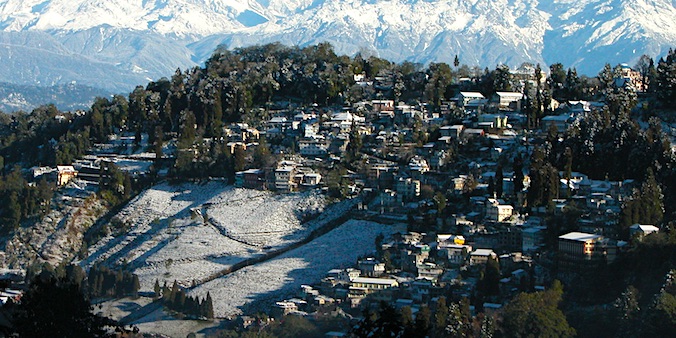
HARIDWAR and RISHIKESH
JOSHIMATH
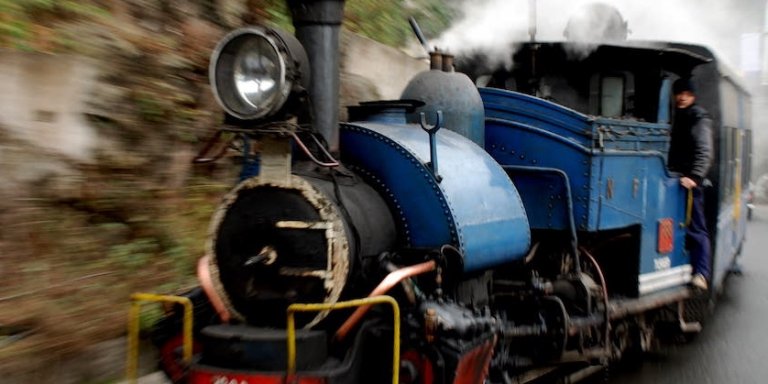

BADRINATH
If there is one legacy of the Brits in India it is tea. Tea estates, tea processing and exporting, and tea drinking. It was long believed that wild tea, Camelia sinensis, only grew in China, but this small woody brush was ‘rediscovered’ by the British in the early 19th century in the jungle of Assam. Camelia sinensis var. assamica had long been used by indigenous people. Large tracts of land were converted into tea gardens and these days Darjeeling (and Assam) tea are known worldwide. There are two kinds of preparation. The black tea that is being dunked in water that just has been boiled is called orthodox. In Indian households and tea stalls the tea is generally boiled for some time with milk and sugar, and sometimes spices. This is called CTC tea. The two kinds of tea require different factory handling, but both have the same Camelia leaves as the starting point.
HOLY HIMALAYAN LAKES
If we were to pick one trek that is, at best, moderately strenuous while offering superb views of the Himalayan giants, it is the Singalila Ridge Trek. On this trek you climb through well-protected subtropical forests teeming with butterflies, birdlife and some rare species like the red panda up to the montane zone of fir and Rhododendron. From late April to May exuberantly blooming rhododendrons and magnolias set the hill sides on fire. Emerging at the alpine meadows of Sandakphu, you’ll be treated to breathtaking views of the Himalayan range. Especially during autumn (October – December), when you can expect clear skies, you can see five summits higher than 8000m within one sweeping view, amongst them Everest, Kangchenjunga, Makalu and Lhotse.
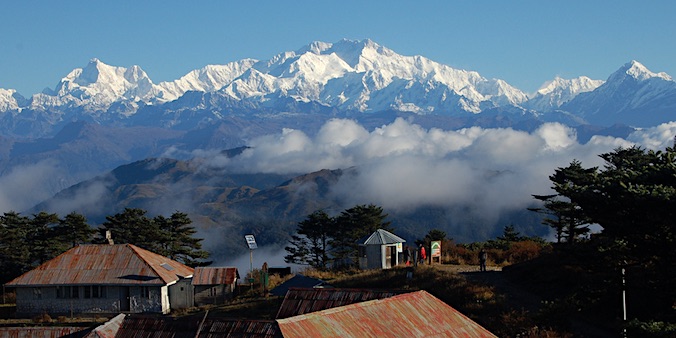
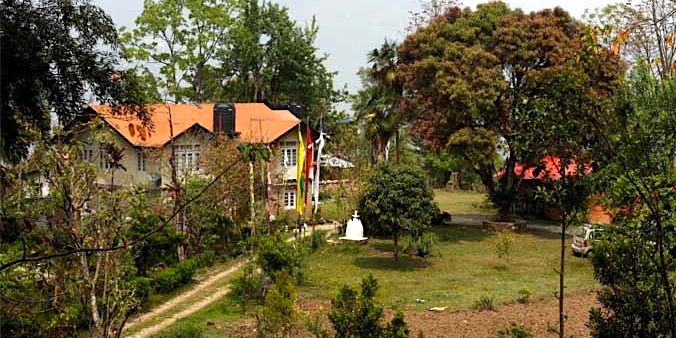
VALLEY of FLOWERS
KUARI PASS
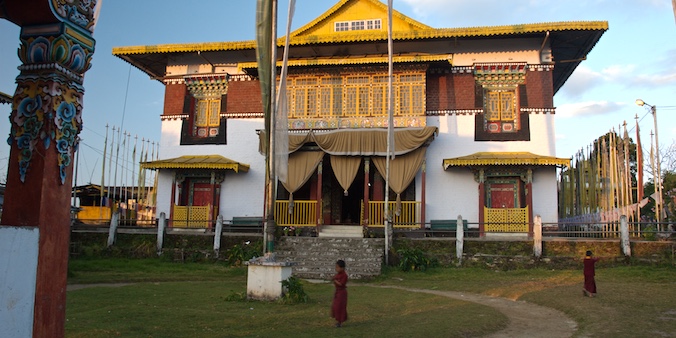
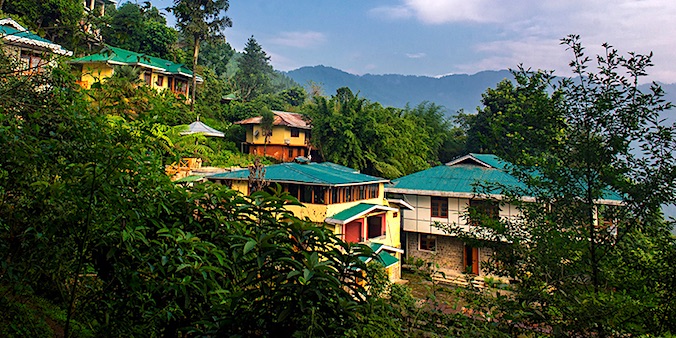
PANA and JHANGI
Teentaley Eco Resort is not a hotel but, as they say “an organic experience of the real, rural Sikkim.” Here, you stay in cozy bamboo cottages amidst a sprawling landscape garden, with a farmhouse and a private forest where you can go bird watching without leaving the premises. The food is home-grown, organic of course, and dinners are accompanied with the typical Sikkimese tongba – bamboo containers filled with millet beer. As the location, in Rumtek, is close to Gangtok, you can stay here, sleeping in the quiet of the mountains and waking to the birds’ songs, while visiting Sikkim’s capital during the day.
RAFTING on the GANGES
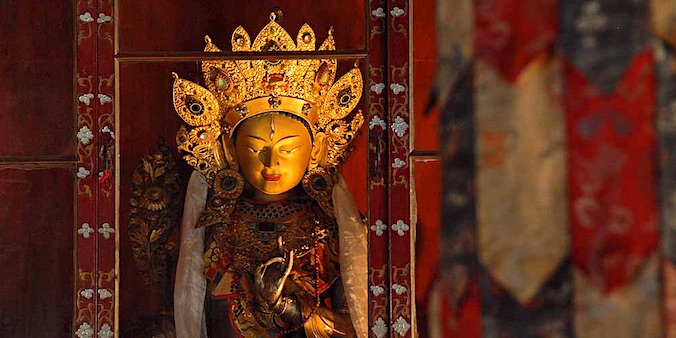
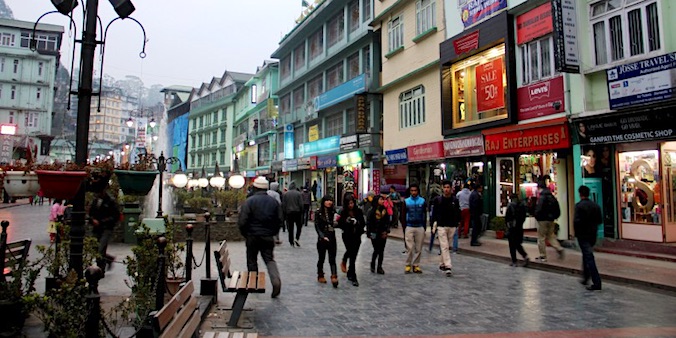
Gangtok
In Sikkim’s capital Gangtok, the rear neighbours almost always live on another street and hardly anyone has a garden, because the slopes are too steep for that. This also means that the roads are nowhere wide and often clogged. But fortunately most locations in the city can be reached on foot. Pedestrians can use a whole series of footbridges to cross busy roads. Gangtok was also the first city in India to declare its centre a pedestrian area. Here it is pleasant to stroll and shop and there are numerous ‘hip’ restaurants and cafes. Thanks to the government’s serious approach to environmental problems – a rarity in India – this is also one of India’s cleanest city centres. Interesting places to visit include the flower exhibition – with many varieties of orchids, – the Institute of Tibetology, Enchey Gompa and Tashi Viewpoint.
